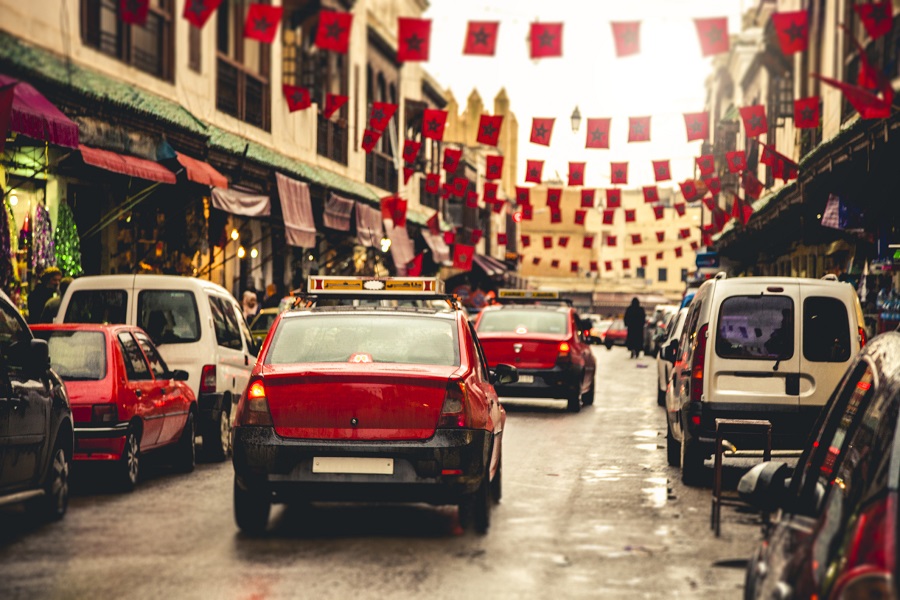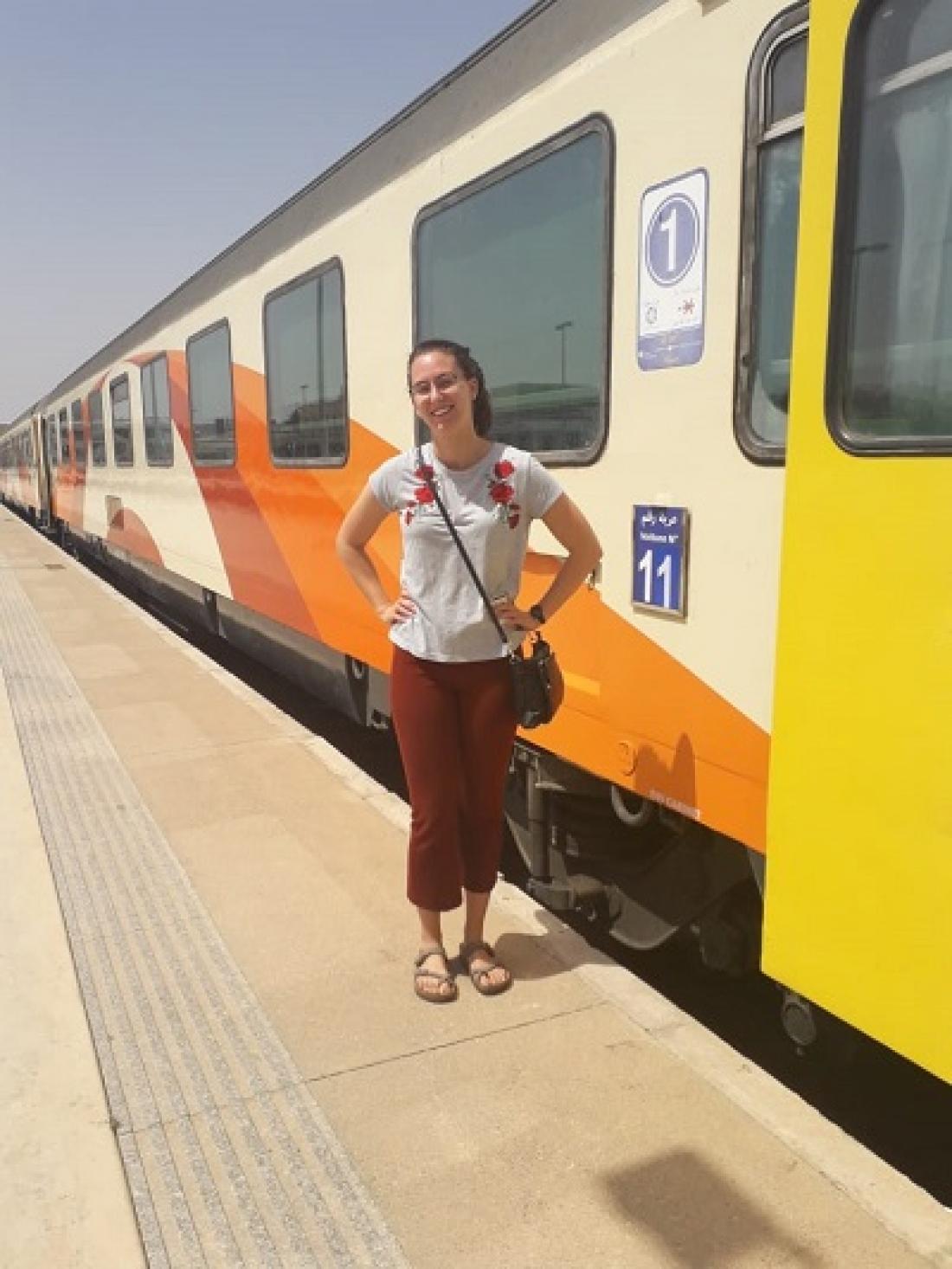Transportation Adventures in Morocco
During the last week of my ten-month Fulbright fellowship in Morocco, I traveled to the last Moroccan city on my bucket list: Oujda. My former Arabic teacher talked about her hometown of Oujda often during the eight weeks we spent together in Meknes, Morocco on the Critical Language Scholarship program in 2017. I was eager to visit her, experience another diverse Moroccan city, and see the Algerian border.
Oujda was out there, snuggled right up to the Algerian border and fairly far from my home in the capital of Rabat. I decided not to drive because most of my adventures in Morocco happen when I’m on a long train ride, or in the back of a shared taxi, or on my commute home on the tram. When I travel, public transportation is a way for me to get to know people, share language, and learn new cultural tidbits. It took two trains (a connection in the ancient city of Fes) and eight hours to reach Oujda, but by then I had spoken Arabic and English, learned a bit of French, shared meals, and made new friends.
Here are my tips for traveling on public transportation in Morocco:
Trains
Morocco has a fairly extensive train system that is steadily growing. Recently, a high-speed train called Al-Boraq (similar to the European high speed trains) opened service between Morocco’s largest city, Casablanca, and the portside city of Tangier. Travel time is about 1.5 hours, a huge improvement on the slower line that took four to five hours. In addition to Oujda, Casablanca, and Tangier, other cities like Meknes, Fes, Marrekech, and Asilah are train-accessible. First class, second class, and even sleeper coach tickets (on longer journeys) are available. Prices depend on the destination, but a typical first class ticket from Rabat to Marrekech will cost about 150 dirhams, or fifteen dollars. High speed train tickets will be about double the cost of a typical fare on the slow train.
Buses
When trains are not available, buses are a great option for long-distance travel. Some cities, like Tetouan, Agadir, and Essaouira can only be reach by shared taxi or bus. Some bus companies are better than others. CTM and Supratours are safe, reputable, and comfortable. Night buses are an easy way to get to faraway cities like Agadir and Essaouira. Other bus companies exist, but they can often take routes that aren’t safe and can be quite crowded and uncomfortable, especially in the summer months. Intercity buses also exist; however, only some cities like Casablanca and Meknes have reliable intercity bus systems.
Taxis
City taxis, called “petit taxis” in Morocco are color-coded! Every Moroccan city has its unique color. For Rabat, it’s dark blue, for Marrekech, it’s red. Petit taxis are a great way to get around the city, although you may have to do some bargaining. Despite the existence of taximeters, drivers in Marrekech are notorious for ripping off just about every passenger (locals too!). In other cities like Meknes and Rabat, taxi drivers almost always turn on the meter for you if you ask. While a taxi should be rented out to you individually, it is normal for drivers to pick up other passengers along the way. Petit taxis only fit three passengers.
Larger taxi vans, called “grand taxis” operate both locally and between cities and towns. Within cities, they usually run regular routes and the cost is always 5 dirhams (50 cents), making this kind of travel cheap and easy. Grand taxis also run regular routes between towns and cities. The prices are fixed and are based on distance. They run as soon as they fill up (6 passengers), making them a great mode of transportation! Grand taxis can also be privately rented out. Chefchaouan, the famous “blue pearl” city of Morocco is only accessible by car or grand taxi. When I took my dad and brother to Chefchaouan, we rented a grand taxi for the four-hour journey and had a comfortable journey.
Trams
I spent much of my commute on the Rabat tramline when in Morocco! This newest mode of transportation opened in Rabat in 2010. It is comfortable and costs 6 dirhams per ride (60 cents). There is also a tram system in Casablanca.
If you need help when using public transportation, ask! Moroccans are always eager to help foreigners and you may be invited to share tea or a meal with them in the future. If you eat when on public transportation, be sure to offer your neighbor some as well. Be sure to greet Moroccans with “Salaam-u-aleykom” and you will become an extra special guest.
Learn more:

